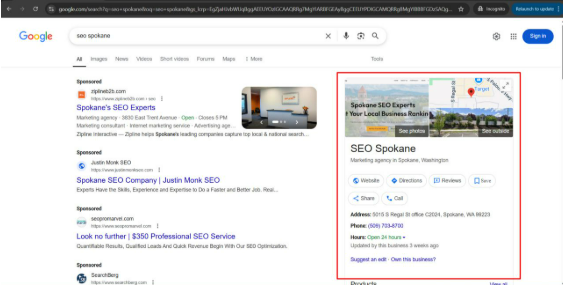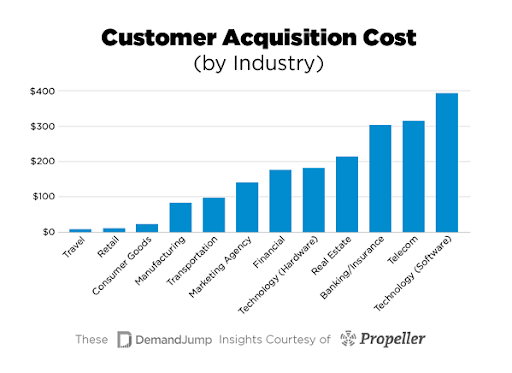
Local SEO Success Story
10 min read
In today’s competitive business environment, retaining every customer you acquire is not just a bonus—it’s a necessity. While attracting new clients may grow your user base, customer retention is the key to sustainable profits, predictable revenue, and a loyal customer base. In this guide, we’ll define customer retention, explain why retention strategies are important, show you how to measure your retention rate, and present proven customer retention strategies that help businesses grow by enhancing the customer journey and experience.
Customer retention refers to the set of activities and tactics a company uses to keep its existing customers engaged and satisfied over time, which is essential for increasing customer retention. It’s about more than preventing churn—retention focuses on deepening customer relationships by continuously delivering value. A high retention rate indicates strong product-market fit, successful customer experience, and a foundation for recurring revenue.
Why It Matters for Long-Term Business Growth
Retaining existing customers leads to customer success, cost efficiency, and repeat customer activity. Loyal customers often spend more, refer others, and contribute to stable revenue. Improving the customer experience helps reduce churn and increase customer lifetime value (CLV). Ultimately, customer retention supports long-term growth and resilience, making it an essential strategy for any business.
Acquiring new customers is expensive. Studies show it costs 5–7 times more to acquire a new customer than to retain an existing one. By implementing effective customer retention strategies, you save resources and increase marketing ROI. This is especially vital for startups or businesses with limited budgets.

Customers who stay longer tend to spend more, contributing positively to your repeat customer rate. They are more likely to buy upgrades, renew subscriptions, or respond to cross-sell offers. Retaining customers drives customer lifetime value, making your revenue more predictable and your business more valuable. Improving CLV is a direct way to boost profits and enhance your customer retention efforts.
High retention leads to stable cash flow. Subscription models especially benefit, as loyal clients contribute to consistent monthly recurring revenue (MRR). But even non-subscription businesses benefit from repeat purchase activity that makes forecasting, inventory, and staffing more accurate and reliable.
Loyal customers don’t just buy—they promote. Through word-of-mouth, reviews, and social media, they help grow your business and increase your repeat customer rate. By prioritizing customer retention, you create brand advocates who expand your reach at no extra cost.
CRR = [(E – N) / S] × 100

Where:
E = Customers at the end of a period
N = New customers acquired
S = Customers at the start of the period
This metric helps you measure customer retention and assess how well your business retains clients over time.
Track retention weekly, monthly, or quarterly to identify patterns. Use CRM tools, analytics dashboards, or customer databases. Setting benchmarks and goals helps you boost your customer retention rate and identify tactics that drive loyalty.
Retention expectations vary:
SaaS: 85–95%
Retail: 60–80%
E-commerce: 30–60%
Hospitality: 55–75%
Compare your CRR to industry standards to see where you stand and where there’s room to improve customer retention rates.
Churn is the flip side of retention. Tracking this rate helps pinpoint reasons for customer churn, giving you insight into friction points in the customer journey.
CLV represents the total revenue a client contributes during their relationship with your business. It’s a critical way to understand the ROI of your retention strategies and overall business health.
This metric shows how often customers return. A high repeat purchase rate means your retention efforts are working and that your product or service meets ongoing needs.
NPS measures how likely customers are to recommend your brand. High NPS usually signals loyal customers, while lower scores can identify gaps in service or value.
First impressions matter, as they are a crucial skill in retaining customers. Use tutorials, welcome emails, and guided tours to ease customers into your product or service. A smooth onboarding experience helps ensure early customer success and lowers churn risk.
Use customer data to customize messages, offers, and support. Personalized engagement makes customers feel understood, which builds stronger relationships and drives retention by rewarding relevance.
Develop a structured program that offers incentives, gamification, or membership perks as part of your strategies to retain customers. A well-designed program encourages long-term commitment and gives customers a reason to stay.
Gather insights from customer satisfaction surveys, reviews, and support tickets. Use this data to fix pain points, enhance features, or resolve service issues—improving the customer experience.
Cashback, exclusive deals, and referral bonuses create emotional and financial reasons for customers to return. Retention strategies like these enhance engagement and trust.
Support should be available where your customers are—email, chat, phone, and social media. Responsive, helpful support builds trust and solves problems before they lead to churn.
Use behavioral data to identify when a customer may disengage. Early detection lets you respond with offers, outreach, or service interventions that boost customer loyalty.
Turn one-time buyers into subscribers. Recurring billing simplifies the buying process and creates habitual engagement.
Send targeted emails or offers to dormant customers. These campaigns remind customers of the value you offer and often re-activate loyal customer relationships.
Your customer service team plays a major role in retention. Train them to resolve issues quickly and empathetically. A single positive interaction can save a potentially lost customer.
Document your strategy to retain customers—include metrics, tactics, tools, and a timeline. This serves as a clear roadmap for your team and aligns efforts across departments to meet customer expectations.
Webinars, guides, and blog posts help customers get more value from your product. Education builds trust, improves satisfaction, and reduces churn caused by misunderstanding or misuse, which is an effective strategy to retain customers.
Recognize anniversaries, achievements, or birthdays. These small, thoughtful touches humanize your brand and build lasting customer relationships.
Automate emails, support prompts, and post-sale follow-ups to stay top of mind. This tactic increases engagement at scale and ensures no one falls through the cracks.
Social groups, forums, or exclusive events help connect your users. A sense of community reinforces loyalty and gives customers reasons to stay emotionally invested, which is an important technique for customer retention.
Starbucks Rewards is a textbook example of a successful retention strategy. Customers earn points with every purchase, boosting frequency and reinforcing loyalty through rewards.
Netflix uses viewing history and behavior to recommend content tailored to each user. This keeps subscribers engaged, showcasing the value of data-driven personalization.
Dollar Shave Club combines convenience, humor, and quality with a subscription model that keeps customers coming back. Their approach proves that effective branding and ease-of-use are powerful methods for retention.
Don’t wait for problems—anticipate needs. Proactive updates and personalized check-ins show customers you care, which increases satisfaction and builds trust.
Flexible return policies remove risk. When customers know you stand behind your product, they’re more likely to buy again, increasing customer retention and building long-term trust.
Maintain the same quality, tone, and service across all touchpoints. Whether online or in-store, customers expect a seamless journey.
Leverage CRM systems like Salesforce or HubSpot to segment audiences, track behavior, and tailor communication. These tools help you enhance customer retention through automation and insight.
Customers want to be heard. Ignoring complaints or suggestions damages trust and invites churn. Regularly collect feedback and respond with visible improvements.
Manage expectations. Overhyping features or service quality can backfire. Be honest in your marketing and ensure you deliver consistently on promises.
One-size-fits-all approaches fall flat. Use customer data to tailor communication, product recommendations, and support experiences.
Use a combination of onboarding, personalization, loyalty programs, and customer support improvements. Regular feedback and proactive engagement are key to building trust and loyalty.
They are techniques businesses use to keep customers long-term, enhancing their overall experience. Examples include loyalty programs, retention plans, re-engagement campaigns, and improving customer service.
Upsell, cross-sell, improve user experience, and deliver value consistently. These tactics enhance CLV and reduce your reliance on new customer acquisition.
Build stronger relationships through onboarding, educational content, personalized offers, and feedback loops. The goal is to meet customer needs and exceed expectations.
Higher CLV means more revenue per client and lower marketing costs over time. It improves efficiency, predictability, and overall profitability.
Customer retention is important not just for revenue, but for growth, brand trust, and long-term success. By prioritizing retention, businesses can drive customer satisfaction, improve loyalty, and outperform the competition. Whether you’re starting small or scaling globally, employing these proven customer retention strategies will help you retain more customers and build a resilient business.